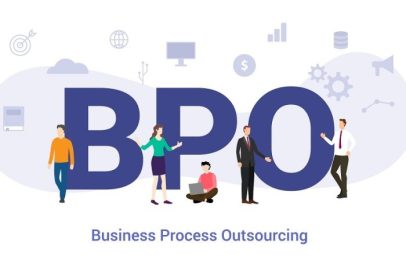How to leverage technology for working capital optimization?
1. What is working capital? Why is it important to your business?
Working capital plays a crucial role in ensuring the continuous operation of companies, and is considered the lifeblood of a business.
Working capital is a key metric used to measure a company’s short-term financial health. Simply put, working capital includes cash and short-term assets that can be quickly converted into cash to meet short-term obligations and operational needs.
Working capital = Current assets – Current liabilities
Where:
- Current assets: includes cash, short-term bank deposits, accounts receivable, inventory, and other short-term assets that can be converted into cash within one year.
- Current liabilities: includes short-term loans, accounts payable, and other short-term debts that must be paid within one year.
- Positive working capital indicates that a company can meet its short-term liabilities and continue its day-to-day operations. Negative working capital indicates that a company may face difficulty in settling short-term obligations and may need raising additional capital.
Working capital is often used to purchase inventory (including raw materials, tools, finished/unfinished goods/products), accounts receivable, and other current assets. Inventory and accounts receivable account for a major proportion of total working capital in most production and business companies.
Total enterprise assets are the combination of short-term assets (including current assets) and long-term assets (including fixed assets and other long-term assets). A company’s current asset structure varies depending on its size, operating model, and field of operation.
Working capital comes from different sources (borrowed capital, equity capital) and causes businesses to incur its cost. An improper or non-optimal working capital structure will greatly affect a business’s operations and performance, and may cause it to lack cash flow for operations, or be heavily dependent on short-term loans, or may result in high cost of working capital, which in turn reduces operating profits, or lead to the business’s working capital turnover rate be much smaller than its competitors.
2. Challenges of Working Capital Management
Common challenges faced by businesses in working capital management:
Shortage of working capital
During business operations, sales revenue may decrease due to various reasons, slowing cash flow and debt collection; or operating costs escalate; or inventory stays high; or short-term debt is heavy. All of these issues impede enterprises to cover their operating expenses, expand their business, and entail a high risk of default.
Abundance of working capital
Conversely, sales revenue may be raised dramatically thanks to explosive and smooth growth, greatly hastening debt collection; or operating costs stay low; or inventory is deficient; or short-term debt is extremely light. Without a plan or forecast, these factors can lead to ineffective use of capital, high financial costs, and loss of profitable investment opportunities.
Ineffective inventory management
- Excess Inventory: causes high storage costs (warehouse rental costs, storage operating costs, financial costs, etc.), and poses a risk of goods to be obsolete, nearly-expired, or degraded, resulting in reduced liquidity.
- Insufficient Inventory: leads to shortages of goods, loss of business opportunities, affecting production and business activities.
Ineffective receivable and payable management
- Slow collection: entails lack of cash flow, increased risk of capital loss, affecting the company’s ability to pay current liability and continue its business operations.
- Large number of overdue payable: increases purchasing costs (suppliers include provision for risk and financial costs in the price when assessing the risk of slow collection). Company will easily lose their reputation to Supplier and Bank.
Ineffective operating cost management
- Excessively high operating costs: reduce profits and competitiveness of the company.
- Improper use of capital: causes waste of capital, increases financial costs, negatively affecting the efficiency of capital use and reducing the company’s credibility with credit institutions.
Ineffective use of short-term financing sources
- Inappropriate choice of funding sources: causes high financial costs and lowers profits.
- Excessive use of short-term financing sources: Using short-term financing for long-term investments, or using capital for improper purposes, increasing the risk of liquidity and default.
3. Causes of ineffective working capital management
According to research and reports from the Big 4 accounting firms, the major causes of the above problems include:
- Businesses struggle with cash flow forecasting and are unable to predict future cash flow shortages.
- Businesses lack a working capital management process or have an ineffective one. Specifically, accounts receivable, accounts payable, and inventory management is rigid, fragmented, and complicated, slowing down the overall value chain.
- No mechanism to monitor whether working capital is effectively used, no development or measurement of control indicators, or failure to detect fraud in working capital and cash management through control indicators.
- Little attention paid to analyzing and monitoring working capital: No periodic and systematic monitoring of working capital, which prevents quick reports or working capital analysis reports from being produced.
4. Working Capital Management Measures
Effective working capital management is an important part of a business’s financial management. To improve its efficiency, the following basic measures can be applied:
- Cash flow planning and forecasting: creating plans for sales, inventory, production, expenses, business results, and cash flow. These enables businesses to predict future capital needs and work out the most optimal scheme for capital financing.
- Effective inventory management: an inventory plan is rarely developed in companies as they are not aware of the impact that effective inventory planning will have on working capital. Inventory planning and forecasting enable optimal production and procurement planning, minimizing inventory costs, avoiding shortages of goods, and optimizing the use of capital.
- Management of credit limits for each customer and effective collection: Evaluating and segmenting customers, as well as analyzing data for customer credit limit establishment enable quick cash collection, minimization of overdue receivables, and improvement of liquidity.
- Effective operating cost management: Vietnamese companies have not pay sufficient attention in planning, especially budgeting operating expense, particularly SMEs. Planning and budgeting, as well as effective control of execution will aid in the reduction of costs, increase profits, and thus enhance the efficiency of capital use.
- Effective management and use of short-term financing sources: Planning capital needs, establishing credit relationships, and proactively seeking and selecting appropriate facilities and credit limits will enable enterprises to coordinate and operate flexibly capital resources according to their specific needs at certain time, avoid capital shortages, ensure effective use of capital, minimize capital waste, and optimize financial costs.
The effectiveness of the above-mentioned measures will be extremely limited without appropriate technological solutions. Most enterprises, CEOs, and CFOs understand the needs of such measures but lack tools and data to put them into practice.
5. Technology Solutions for Working Capital Management by FPT IS
Thanks to rapid digital transformation, technology has been playing an important role in businesses’ working capital optimization, which enhances the efficiency of capital use, reduces its risks, and promotes businesses’ growth.
Below are FPT IS’s flagship technology solutions and products tailored for management and optimization of efficiency of working capital use:
5.1. Consulting in Enterprise resource planning solution:
ERP (Enterprise Resource Planning) system: core modules of ERP include sales management, procurement management, warehouse management, manufacturing management, asset management, maintenance management, quality management, and finance and accounting (including accounts receivable, accounts payable, assets, general ledger/journal, costing, management reporting, capital management, and budgeting management and control). ERP enables business process automation, provides detailed information on cash flow, inventory, accounts receivable/payable, as well as provide data, supporting automation for forecasting and planning.
Some modules and functions of ERP play an important role in working capital management:
- Warehouse management: offer real-time visibility into a company’s entire inventory, providing timely information to set inventory limits for inventory optimization, reducing storage costs and avoiding shortages or surpluses of goods.
- Sales management, accounts receivable management: automate the process of controlling credit limits for each customer, monitor payment status, warning of and minimizing overdue debt, and provide information for sales planning and receivale collection, as well as demand planning and cash flow forecasting.
- Procurement management, accounts payable management: automate the procurement process, track debts with suppliers, provide information for procurement planning, and carry out payment planning for cash flow forecasting.
- Cost and budget management: automate budget control processes, procurement approval processes, and analyze cost effectiveness.
- Production management: automate production planning and monitor production execution, providing timely information for optimal and efficient demand and inventory planning.
- Cash flow and capital management: produce cash flow forecasts, shortage warnings, capital financing planning, credit limit planning, and suggestions for selection of capital limits with optimal interest rates, enabling flexible and rapid management and decision-making on the use of working capital.
ERP has been adopted in numerous large-scale and FDI companies but only through its basic modules which revolve around certain functions instead of a synchronized ERP system for the entire value chain management, limiting its efficiency. Especially, those are not gained from the full exploitation of ERP in management and use of working capital.
To maximize the benefits of ERP in business management and achieve optimizations during its application, FPT IS in strategy of co-creating digital transformation with companies, FPT IS has put major effort into providing consulting services for the optimization of existing ERP systems, solutions for improvement, upgrading, and implementation of new ERP systems, as well as the integration of FPT IS’s ecological solutions and products into these system to enhance enterprises’ entire value chain management, boosting the efficiency of working capital use.
5.2. E-Commerce:
In recent years, traditional sales channels have been in a sharp decline while e-commerce sales have seen dramatic growth. Responding to this trend, companies have been shifting their business models to hybrid ones that combine traditional and electronic (online) sales. However, flexible change of business models for quick adaption to the market requires state-of-the-art pioneering technology solutions. Thanks to its insights about companies’ demands and ability to grasp market trends, FPT IS has invested in solution development and is well-prepared to partner with businesses to quickly adapt to these changes, enabling them to raise their revenue, create competitive advantages over their competitors, as well as keep them in the lead.
- Online sales: Enable businesses to reach more customers, earn more revenue, and gain a faster capital return.
- Online payment: Enable businesses to receive payments faster and more easily, minimizing fraud risks and shortening capital return time.
- Digital supply chain: Track and manage the supply chain more effectively, thus reducing costs and optimizing the cash flow.
For B2B and B2B2C business models, FPT IS offers an eSales solution capable of connecting online sales with traditional customers, transitioning traditional distribution systems to online sales, intergrating cresit limit and receivable accounts from ERP, tracking online deliveries, all in real time, as well as automatically interacting and communicating directly with customers. This solution has been successfully deployed at a number of companies, including Rang Dong, Dynamic, Vinaseed, and others.
For B2C and omnichannel sales modes, FPT IS provides the Utop solution featuring marketing for customer attraction, customer journey touchpoints, sales, customer care, customer retention, and customer experience improvement.
5.3. Big Data and Artificial Intelligence:
Economic and social development, as well as corporate governance, benefit greatly from big data and artificial intelligence are recognized. Specifically, these technologies enhance the efficiency of working capital use through:
- Data analytics: Collect and analyze data from various sources to better understand customer behavior, market trends, and operational efficiency, allowing businesses to make more informed decisions about sales policies, marketing campaigns, inventory, and receivables.
- Demand forecasting: Use data from sales history, market analysis, competitors, and other factors to forecast future demand, assisting companies to more effectively plan production and procurement.
- Analysis of use of credit limits: Evaluate customer credit and solvency to minimize credit risks and overdue/bad debts.
- Risk management: Identify and assess potential financial and operational risks to prepare appropriate preventive measures.
FPT has researched and developed AI in Vietnam from its earliest days. Over a decade later, FPT has now successfully built an artificial intelligence ecosystem with more than 20 solution products, serving over 20 million users in 15 countries. In particular, Utop has been positioned as one of the solutions that greatly aid in boosting companies’ revenue, providing competitive advantage expansion to outweigh rivals’, and enhancing the efficiency of working capital use. Utop features:
- Campaign Studio: a platform to create marketing campaigns, attracting and identifying customers with various pre-set campaigns.
- UEngage CDP: a customer data platform that connects data to campaigns, including Campaign Studio, and creates marketing and sales scripts automatically.
- Loyalty OS: a customer loyalty platform that allows dynamic updating of point accumulation as per conditions, membership classification, point accumulation and redemption, and e-Voucher management.
- Ucommer: an omnichannel customer management platform that serves agents at all levels (B2B), e-commerce (B2C), sales via web, ownshop, social media (like tiktok), promotional campaign, and multi-sites sales.
- UtopGPT: a platform tailored for building customer support channels using Generative AI, Image Search AI, Try-on AI, and AI Copilot Sales Guided.
Utop solutions have been effectively used by numerous popular domestic and foreign companies and brands such as Unilever, Pepsi, Acecook, Maison, Bayers, Intage Japan, BT com, TP Bank, VP Bank, Bao Viet, and FPT itself.
5.4. Internet of Things (IoT):
The 4.0 technology era has extensively spread the application of IoT. This technology has made a number of breakthroughs in corporate governance in general and enhancement of working capital efficiency in particular through some of the following operating activities:
- Asset tracking: Track the location and status of assets in real time, enabling companies’ asset usage optimization and damage minimization.
- Energy management: Monitor and manage energy consumption, enabling businesses’ cost saving and operational efficiency promotion.
In addition, other technologies such as cloud computing and blockchain, … can also be utilized for optimization of businesses’ working capital.
Technology plays a significant role in working capital management and optimization, and it is indispensable in the digital age, as well as in the severe competition and rapid changes of the market.
To make smart choices and exploit technology effectively, the company should corporate with reliable partners. The right partners can bring to the table appropriately crafted solutions to solve industry problems, partnerships with businesses to promote their growth, data security services, and support the company to develop and enhance capabilities. Equipped, invested, developed with extensive experience in providing region-wide leading technology solutions and successfully applied in a number of enterprises, along with a team of consulting experts in diverse fields, FPT IS is assertive and confident to empower the enhancement of companies’ value and efficiency as well as the effectiveness of their use of working capital.
| Exclusive article by FPT IS Business Technology Experts
Nguyen Thi Phuong – Director of Digital Transformation Consulting, Enterprise sector, FPT IS |













